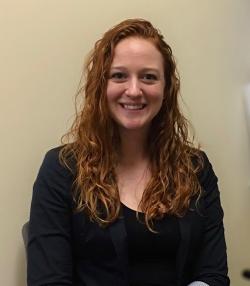
Corvallis, OR, United StatesAge: 29
Tell us a bit about yourself!
I serve as a STEM consultant at the Center for Research and Training (CRT) at The Learning Center for the Deaf. I work with the CRT to develop an online STEM conceptual dictionary, including environmental topics, entirely in American Sign Language (ASL) to further close language hurdles that Deaf students face in STEM learning. We partner with an estuarine research reserve, funded through the National Oceanic Atmospheric Administration, through which we are designing a new accessible curriculum and providing workshops to Deaf students, in-service and pre-service teachers, and educational interpreters. With CRT, I also consult teachers at several Deaf schools on effective bilingual strategies (ASL and English) and STEM instructional practices that are highly collaborative and specifically tailored to Deaf students. I give presentations and workshops about the environment and STEM bilingual education to K-13 students, educators, interpreters and administrators, both nationally and internationally. I also serve as an instructor for several environmental and STEM camps for middle and high school students, and mentor several high school, undergraduate, and graduate students in conducting environmental research. I have brought over 30 volunteers with varying educational backgrounds to the coast to help me with my research, where I taught them field research skills and about the ecology of the rocky intertidal system.
I am also a PhD candidate studying Marine Ecology and teach several undergraduate lab courses at Oregon State University. I have a M.S. in Marine Biology from Northeastern University and a B.S. in Biology from Rochester Institute of Technology.
What inspired you to become a champion for the environment and environmental education?
My work is driven by two personal experiences of (1) environmental joys and sadness, and (2) inaccessibility to environmental education.
First, as a SCUBA diver for years diving in many places in the Americas, I have seen many incredible flora and fauna. One experience I remember vividly was snorkeling in the Bahamas during college, and the coral reef was teeming with life. Years later I returned to the Bahamas and, to my dismay, the reef was gone. In just a few short years, everything had changed.
Second, because the educational system was not accessible to Deaf people like me, I often missed small yet relevant talks about science among colleagues without interpreters present, as well as inaccessible seminars/videos. On a daily basis, I missed valuable details, and over time they amounted to a gaping hole of missing information that I scrambled to “mad lib” in my own time. It was exhausting. I knew I was not alone in struggling to access something as basic and humane as information. I cannot count how many times I have seen the faces of people of all ages brighten, sharing the same excitement I had, at finally accessing and comprehending environmental topics in their native language, American Sign Language.
I feel responsible as a member of the community at large and of the Deaf community to provide them with the same opportunities I had – in experiencing nature, and in making educated choices in deciding their role in our collective efforts to protect our home.
What advice would you give to the next generation of leaders that are looking to bring about positive change in their communities through EE?
Take the time to communicate. Communicate in a way that transcends educating, that involves full participation of both parties and demonstration of open, empathizing attitudes. Open communication will allow information to be shared and collaborative bridges to be built.
Communication is not trivial. It is a powerful catalyst, turning thought into progress. It allows us to discuss, grow, and change together as a society. Communicating so that all may understand—be it in ASL or any other language, academically or conversationally—allows people to keep pace with changes to society and the environment. Communicating about environmental issues empowers individuals and gives them an opportunity to become informed about the life surrounding them. It is a tool that allows for a sense of personal responsibility in each and every one of us, and for the initiative to get involved in sustaining our beautiful home.
Who do you look up to as inspiration for your work?
I look up to every person as an inspiration for my work. Every person taking the time to do what might even seem to be the smallest, insignificant thing – picking up a piece of gum wrapper and throwing it in a trash can, carrying a reusable water bottle or shopping bag, declining a straw, choosing to take the public transportation, or sharing stories with a person about the nature. They inspire me. They reinvigorate me. These reminders of responsibility, mindfulness, and empathy are glimmers of hope juxtaposed against the backdrop of ignorance and fear. Every action counts. We have a chance to make our bleak future “unseen” with individual actions. By the power of one. Each environmentally-conscious person creates a positive ripple effect that multiplies with each successive person it touches.
What pro-environmental behavior do you think would make a big impact if everyone in the world started doing it?
The urgency of our responsibility to the environment is on a scale that is unfathomable to most of us. We are grappling with how our actions today are shaping our home 100 years from now. In the midst of a seemingly massive problem, we need to recognize that it is not people’s ability to become involved that’s lacking, it is the connection. Humans are social beings and we seek to connect and to belong. Connection elicits positive thoughts and promotes a strong desire to act. If we make the time to connect through listening and empathizing, we will naturally come to understand that we are each other’s purpose, and appreciate and cherish our environment for what it is – a home for all of us.